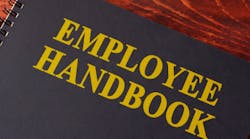"So, how can I help you?" I asked a potential client. “I need an employee manual," he said. "I'm tired of being bombarded with questions about vacation, sickness, funeral days, uniforms, and so on. It's gotten to the point I can’t remember what I told one person or the other. I need a real manual.”
Together we began to design an employee manual for his practice. Of course, this work involved collaboration with my dentist-client. During this time I got the impression my doctor was having difficulty making ends meet financially. He had saved little for retirement. I asked a few questions concerning this issue, and he decided our work should expand to more than just a manual. I would run some reports from his practice management software, and then we would talk again.
This is how it all began, very innocently
His one front desk employee had been with him for 15 years. My client was godfather to her daughter. They saw each other at church every Sunday. He knew her parents. She was family. She and I sat down together and started running reports.
Immediately, I discovered the practice’s software hadn’t been updated in years. She told me updating just messed everyone up for weeks, so they stopped doing it. The reports I needed were not even available because of the age of the software. From what I could tell, the doctor had no real practice monitors available to him except production and collections. I recommended the dentist change to more current software. Thankfully, he did, despite the reluctance of his front desk person and the increased cost. Soon it was up and running, and I had all the reports I needed.
After reviewing the reports, I sat down with the doctor. Some of his monitors were totally off target. His outstanding insurance was way too high, his collection rate was too low, and adjustments were like a tidal wave: six months they were $2,000, and this last month $30,000. What was going on?
It took many phone calls, data mining, and some odd behavior from the front desk employee in order for me to comprehend what was happening.
In our hearts, we all want to give the other person the benefit of the doubt. "Perhaps she hadn’t been properly trained," we think. As I gathered more information; however, my suspicions of embezzlement were supported.
I met with my client. I explained how I thought he was being embezzled. He didn’t believe it. He said it was impossible; she would never do that. I talked to his accountant, and then the two of us met with the doctor. He still didn’t believe it, but was less confident now. Then the dentist’s wife joined us and listened to our explanation and evidence. She believed it. Gradually he came around.
“Now what?” he asked. “Will you prosecute?” I asked. “No,” he firmly stated. Urging continued, but he wouldn’t budge, ever, on his answer. Would he fire her? He replied he would rather train her as an assistant where she didn’t work with money. More urging ensued. He started wavering on whether to fire her or not. All this was obviously painful for him.
A meeting was called where the employee confessed. She said she didn’t know why she did it. She just happened on how to do it, and then it grew more frequent. She couldn’t even tell us when it started because it stretched over so many years. To our great relief, the doctor did fire her. The total amount we estimated she had embezzled was close to $800,000. His retirement, essentially. Did he get any money back? Only her very small retirement fund of $5,000.
Who would have guessed that designing something as straightforward as an employee manual could lead to uncovering a long-term embezzlement, which, once stopped, essentially doubled his income?
What can we learn from this painful event?
• Trust is a powerful emotion which will block your judgment and ability to accept reality. Force your mind to open to the possibility of embezzlement if it is brought to your attention.
• Keep your software updated, current, and relevant. Assure your employees are effectively and regularly trained.
• Report your practice’s monitors monthly so you and others can pick up on deviation from industry benchmarks and your office’s past performance.
• Understand your insurance coverage concerning embezzlement and what is required to receive your benefits, such as prosecution.
• Remember the role opportunity plays in embezzlement. As discussed in October’s fraud article, it is one of the three necessary components of fraud. Assure your financial systems are up-to-date, duties are appropriately divided, and checks and balances in place.
Updated regularly.






